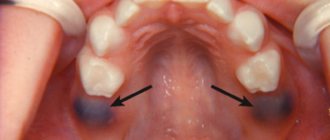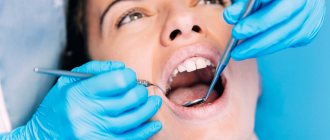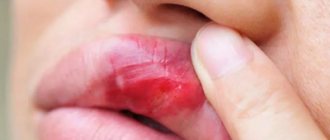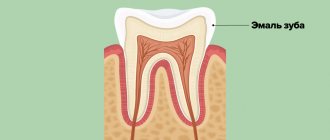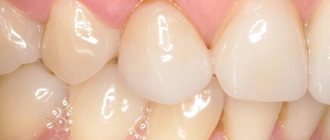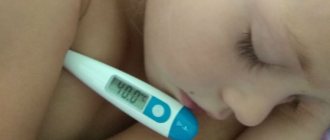What is thrush
Thrush (or candidiasis) is a type of stomatitis (inflammation of the mucous membrane in the mouth) caused by a yeast-like fungus of the genus Candida. It is this fungus that causes the disease, usually transmitted through contact with an infected person.
The fungus is not a “guest” in the body: like other microorganisms, it always lives on the mucous membranes of the intestines, genitals, and mouth, but in small quantities. However, such a normal state is possible only with a “friendly” balance of “good” and “harmful” bacteria representing the microflora of the human body. This balance of equilibrium can be disrupted upon contact with a patient with thrush: in this case, a fungal infection from the outside enters the body of a healthy person and begins to multiply quickly there, disrupting the natural microflora.
This is possible when the immune system is weakened, when the number of “good” bacteria sharply decreases, and they are unable to fight the growing number of “harmful aliens.”
The occurrence of thrush in the mouth in children over the age of one year is explained by the fact that when they come into contact with each other, they pass toys and objects that they take in turn in their mouths, and among them there is often at least one child infected with candidiasis. And since the child’s immunity is still in the development stage, its internal protection is weakened, so infection occurs very quickly.
Causes of thrush
What are the causes of this disease? Often, a child becomes infected from the mother during childbirth, or if the mother neglects intimate hygiene. Therefore, a pregnant woman diagnosed with bacterial candidiasis needs to be observed by specialists. Infection through toys and pacifiers is possible in the absence of sanitary treatment. Thrush can occur in children while taking antibiotics, allergies, a tendency to regurgitate, or frequent colds. These facts indicate that the pathogenic fungus lives in almost every person, but becomes pathogenic only with a decrease in immunity and in the presence of a suitable environment (lactic acid).
Mothers need to know that a baby who receives breast milk is less likely to encounter thrush problems. But, nevertheless, an important factor in protecting against infection is the observance of simple hygiene rules, this becomes especially important as the baby grows up, when all objects that fall into his hands immediately end up in his mouth.
Symptoms of thrush in the mouth of a baby
What does thrush look like in a baby? When a fungal infection enters the child’s oral mucosa, its proliferation leads to inflammation in the mouth area. Therefore, quite quickly you will be able to notice small crumbs of white “cereal”, reminiscent of cottage cheese, on the child’s cheeks, palate, gums and tongue. An inexperienced mother may well assume that this is the remains of milk or formula after regurgitation. But checking whether this is so is quite simple: take dry sterile gauze or a bandage and very carefully try to remove the white coating. If these are really leftover food, they will be easily removed; if it is thrush, it will be more difficult to erase the curdled coating. And after removing it, you will notice inflamed redness in the oral cavity. If your baby has thrush, his appetite and sleep will most likely worsen, and he will become restless and moody.
Diagnosis of gum disease in children
A routine oral examination should be performed by a pediatric dentist every six months. And as necessary, if a small patient exhibits any deviations in the development of teeth or symptoms of disease of the oral mucosa. Since it is advisable to diagnose the inflammatory process at the earliest stage.
If redness, swelling and bleeding are detected, the cause of which is an excessive amount of soft plaque or food debris on the teeth, the dentist will make a diagnosis and prescribe procedures.
If a bacterial infection is suspected, a clinic specialist can take biomaterial from the inflamed areas of the gums for clinical tests. Based on the results of the analysis, the specialist prescribes a treatment plan and the date of the next appointment to ensure the final recovery of the little patient.
Causes of oral thrush in newborns
How can Candida fungi get into a baby’s body?
- infection can occur during the mother’s pregnancy if she suffers from genital candidiasis on the eve of childbirth: during the birth process, a fungal infection enters the placenta and amniotic fluid, and then into the newborn’s body;
- a baby can also become infected from a nursing mother if her nipples are affected by a fungal infection;
- when a child is bottle-fed or sucks on a pacifier, it, as well as bottles and nipples, must be treated in a sterilizer or boiled water before giving it to the newborn; unsterile nipples can cause bacteria to enter the oral cavity;
- the fungus can live not only on the mucous membrane, but also on the skin of the hands, from where it can easily migrate to the skin of the child if he is cared for by a person affected by thrush;
- The fungus can also be found in pet hair, dust, raw vegetables, meat or milk, so after contact with all these “transmitters” of bacteria, you must wash your hands thoroughly before touching the newborn;
- treatment with antibiotics can also disrupt the natural balance of the body's microflora; as a result of antibiotic therapy, candidiasis occurs in mother and baby who did not take medications containing “beneficial” bacteria along with antibiotics;
- candidiasis can occur if the mother has not learned how to properly attach the baby to the breast during feeding; the child may swallow too much air when sucking and, as a result, often burp; under such circumstances, most of the dairy food can remain in the child’s mouth, giving rise to fermentation processes and promoting the proliferation of fungi.
- thrush often develops in premature babies because their immune defenses are still too weak;
- candidiasis during artificial feeding can affect the baby due to the fact that he does not receive substances from mother’s milk that suppress the growth of fungal microflora;
- if the mucous membranes in the child’s mouth often dry out due to too dry air in the room or thirst, then such situations can contribute to the development of thrush;
- if the child’s immunity is reduced due to illness, poor sleep, lack of vitamins, then this can also cause fungi to multiply;
- candidiasis can also have a chronic form: in this case, it is often caused by serious illnesses in the child - diabetes, leukemia, HIV.
Prevention of candidiasis in childhood
Measures aimed at preventing the occurrence and development of the disease in childhood include:
- limiting contacts between children and carriers of this disease in preschool educational institutions, schools, sections and clubs;
- maintaining the baby’s personal hygiene;
- competent organization of the process of feeding the baby;
- maintaining a healthy diet;
- inclusion in the child’s diet of foods rich in all essential vitamins;
- sterilization of bottles, pacifiers and nipples;
- systematic visits to the pediatric dentist to assess the state of oral health.
It is important to understand that self-medication for oral candidiasis not only does not promote recovery, but can also lead to consequences dangerous to the health and life of the baby. That is why, if any symptoms indicating the development of this disease are detected, it is necessary to contact a dental clinic as soon as possible and undergo a course of treatment according to a regimen drawn up by an experienced dentist.
Dangers of candidiasis for a newborn
Candidiasis can occur in simple and complex forms. And depending on the degree, it contains certain dangers:
- in severe forms of thrush, the fungus can reduce immunity and disrupt the gastrointestinal tract;
- candidiasis in a girl can spread to the vaginal mucosa, creating the risk of a pathology called synergy - fusion of the labia or vaginal mucosa;
- a mild form of thrush, in which it is enough to treat the plaque, usually does not pose any danger;
- with moderate thrush, inflammation forms under the white coating, which begins to bleed during treatment; this form brings additional discomfort and pain to the child; in the absence of proper treatment, the disease can become more severe;
- in severe cases of the disease, the fungal infection spreads throughout the entire oral cavity; in addition to pain and discomfort, the child may have a fever; Difficulties with swallowing can lead to the baby refusing not only food, but also water, which leads to rapid dehydration; this condition is life-threatening for the child, so its treatment is sometimes carried out in a hospital;
- thrush can occur not only in the acute, but also in the chronic stage: in such cases, exacerbation is characterized by the appearance of plaque on the mucous membranes and dry mouth; as a result of the infection spreading to the skin, small ulcers appear in the corners of the child’s mouth, and dense lymph nodes become noticeable to the touch under the jaw; reddish inflammations acquire a brownish tint and become painful, their area increases.
Causes of gum inflammation in children
- Skipping or poor quality teeth brushing;
- Sucking dirty objects;
- Errors when installing seals;
- Pathologies of the dentition;
- Carious cavities with sharp edges;
- Bite correction;
- Breathing through the mouth;
- Abnormal structure of the oral cavity organs (attachment of the frenulum of the tongue and lips);
- Problems with the functioning of the cardiovascular system;
- Disruption of the gastrointestinal tract;
- Infectious diseases (ARVI, influenza);
- Hormonal abnormalities;
- Hereditary anomalies.
Is research necessary?
Usually, thrush in the mouth of a baby does not require additional research, since it is not difficult for an experienced specialist to diagnose it based on obvious signs. But sometimes, in case of serious lesions, additional studies may be prescribed:
- microscopic: in this case, the doctor will take scrapings from the oral mucosa to examine the yeast-like fungal cells more carefully;
- bacteriological: during such a study, a scraping is also taken and then bacteria are cultured to understand how large the volume of fungal colonies is and how amenable to treatment they are with antifungal drugs; in addition, bacteriological testing helps determine which drug is the most effective in treatment, because some of them may not have an effect in the treatment of thrush;
- serological: this study requires a blood test, in the serum of which antibodies to fungal infection are examined.
Treatment of children at RAIDEN
In the RAIDEN network of dental clinics, the treatment and prevention of oral diseases of young patients is treated with the utmost attention and reverence - the health of the younger generation is very important to us!
All medications used in our clinic meet the highest quality requirements. Before using them, we conduct a blood test of the baby to determine drug tolerance. The safety of your children, our little patients, is paramount to us.
How to treat oral thrush in infants
Treatment of oral thrush in an infant is not a complicated process, but it requires the systematic implementation of certain procedures several times a day until the child recovers. If you find a mild degree of thrush in your baby, but at the moment you cannot call a doctor (for example, on a day off), then you can use traditional methods of eliminating thrush. If the degree of damage to the mucous membrane has already reached serious forms, it is better not to risk it and call an ambulance.
Traditional methods for eliminating thrush:
- using a soda solution: prepare a solution (dissolve 1 teaspoon of soda in a glass of warm boiled water), then wrap a sterile bandage around your finger, moisten the winding in the solution and very carefully wipe the areas of fungal infections; Do not rub them under any circumstances, because under the plaque there may be bleeding plaques, through which you risk allowing bacteria to enter the baby’s body; such light rubbing can be done 4 times a day until you have the opportunity to visit a doctor;
- use of honey solution: prepare a solution (dissolve 1 tsp honey in 2 tsp warm boiled water); however, please note that it is unacceptable to use a honey solution if a child is allergic to bee products; if the child tolerates honey well, then treatment with the solution can be carried out similarly to treatment with soda; You can also treat your baby’s pacifiers and toys, which he likes to put in his mouth, with any of these solutions;
- for candidiasis of the nipples, treat them with any of the above solutions;
- You can use other natural antiseptics for rinsing and treating the oral cavity - for example, herbal infusions; you can prepare a decoction of chamomile, green tea, calendula, taking 1 tsp. dry herbs for 1 cup of boiling water; Sage, elecampane, yarrow, burdock, and oak bark also have antiseptic properties, but it is also necessary to understand that any of the herbal preparations can cause an allergic reaction;
- sometimes the contents of aloe vera stems are used as antiseptics, lubricating the affected areas with this juice;
- Among the natural oils that can be used to lubricate the oral cavity, rosehip, flax or peach oils can be used after rinsing or treating plaque.
How to distinguish thrush from the consequences of regurgitation
Some parents (especially if the child is the first-born) mistakenly mistake the plaque for the remains of curdled milk after the baby has burped. Indeed, it can be very difficult to visually determine the nature of the contents of the oral cavity.
To understand what exactly caused the symptom, you can do a small test. You need to moisten a piece of clean cloth with boiled water or chamomile decoction and try to remove the plaque.
If this is the remains of milk after regurgitation, then the baby’s mouth will be easily cleaned, and all the contents will end up on the tissue. If you have thrush, it is not so easy to remove plaque (after the procedure, irritated areas will remain at the site of inflammation).
Self-medication precautions
When choosing methods for self-treatment of oral thrush in a baby, you need to understand that sometimes such procedures may not correct the situation, but on the contrary, harm the child.
For example, improper use of soda solution when treating the oral mucosa can cause additional injuries. Therefore, carefully prepare the soda solution, not exceeding its concentration more than 1-2%, because a stronger concentration leads to a burn to the mucous membrane.
You can complicate the situation with candidiasis by using a honey solution. After all, beekeeping products are one of the most powerful allergens, so when using them you need to be absolutely sure that there is no allergic reaction.
In addition, when using herbal infusions, do not use several herbs at the same time. In this case, if an allergy suddenly arises, you will know which plant caused it.
Similar folk recipes can be used when treating an older child, but it is better not to experiment with the baby’s health. If the situation is urgent and you cannot see a doctor today, it’s better to play it safe and call an ambulance. At your appointment at the clinic, your doctor will prescribe medications to combat the fungal infection. When treated with medications, you can avoid additional risks, and candidiasis will go away faster.
Treatment of thrush with medications
If the treatment is prescribed correctly, then after a couple of days the child will feel much better even with a severe form of the disease. However, this does not mean that taking the drug should be stopped - it is necessary to complete the full course of treatment until all symptoms of candidiasis are eliminated.
Thrush that is not completely treated is at risk of returning during the next vaccinations or during the baby’s teething period. During such periods, do not use the previously prescribed medication yourself and under no circumstances increase the dosage of the medications. After all, an increased dose of an antiseptic can provoke the opposite effect - the occurrence of bacterial stomatitis due to the proliferation of pathogenic microflora. Independent and uncontrolled use of medications is always risky because beneficial bacteria living on the surface of the mucous membranes may die, and their place will quickly be taken by pathogenic microorganisms. Therefore, wait for a doctor’s appointment, who will accurately determine the required dosage of the drug.
In addition, in parallel with drug treatment, do not forget about treating your baby’s nipples, bottles and toys: they can be regularly boiled and kept in a soda solution. When breastfeeding, do not forget to wash your nipples before each time your baby latches on.
Clinical treatment
The success of treatment of candidal stomatitis in children can only be said if all sources of infection have been completely eliminated. When the cause of oral disease is the use of antibiotics, in parallel with general treatment, a course of antifungal therapy may be prescribed.
The principle of treating candidal stomatitis in children comes down to creating an alkaline environment in the oral cavity - it is this pH value that is detrimental to fungi. In addition, in an alkaline environment, most pathological microorganisms die, including those that cause carious tooth decay.
The child’s oral cavity can be treated with a solution of baking soda (the optimal concentration will be determined by the attending physician). The procedure for treating candidal stomatitis in children is quite simple: a gauze swab soaked in a solution is used to treat the oral mucosa of the gums and cheeks.
In severe cases, your dentist may prescribe oral medications.
The Doka-Dent dental clinic provides quick and safe diagnostics for effective treatment of stomatitis in infants and older children. Branches in Moscow are located at two addresses:
- Teply Stan district, Leninsky Prospekt, building 131, 1st and 2nd floor. One minute from Troparevo metro station in a building located between Leninsky Prospekt and Academician Bakulev Street.
- Tverskoy district, 1st Tverskaya-Yamskaya, building 27, 2nd floor. Three minutes from any exit from Belorusskaya station in a building located between the first Tverskaya-Yamskaya and the first Brestskaya streets.
Specialists from both clinics conduct examinations free of charge and help urgently prevent the development of complications and the spread of the disease!
To prevent your baby from getting thrush
To prevent thrush from reaching the baby’s mucous membranes, special precautions must be taken:
- Regularly care for your child’s mucous membranes, monitor their condition when the baby is sick, and especially when he suffers from infectious diseases;
- If your child is prescribed antibacterial drugs, be sure to remember to use special means to protect the microflora;
- If candidiasis occurs during pregnancy in an expectant mother, it is necessary to urgently consult a doctor and undergo treatment. In addition, on the eve of birth, maternity hospitals carry out special prophylaxis for newborns with an increased risk of candidiasis. Thrush is especially susceptible to infants whose mothers suffer from chronic candidiasis and those who have foci of infection already in the immediate vicinity of birth. Mothers with inflammatory gynecological diseases or difficult childbirth can also transmit the risk of fungal infection to the newborn.
